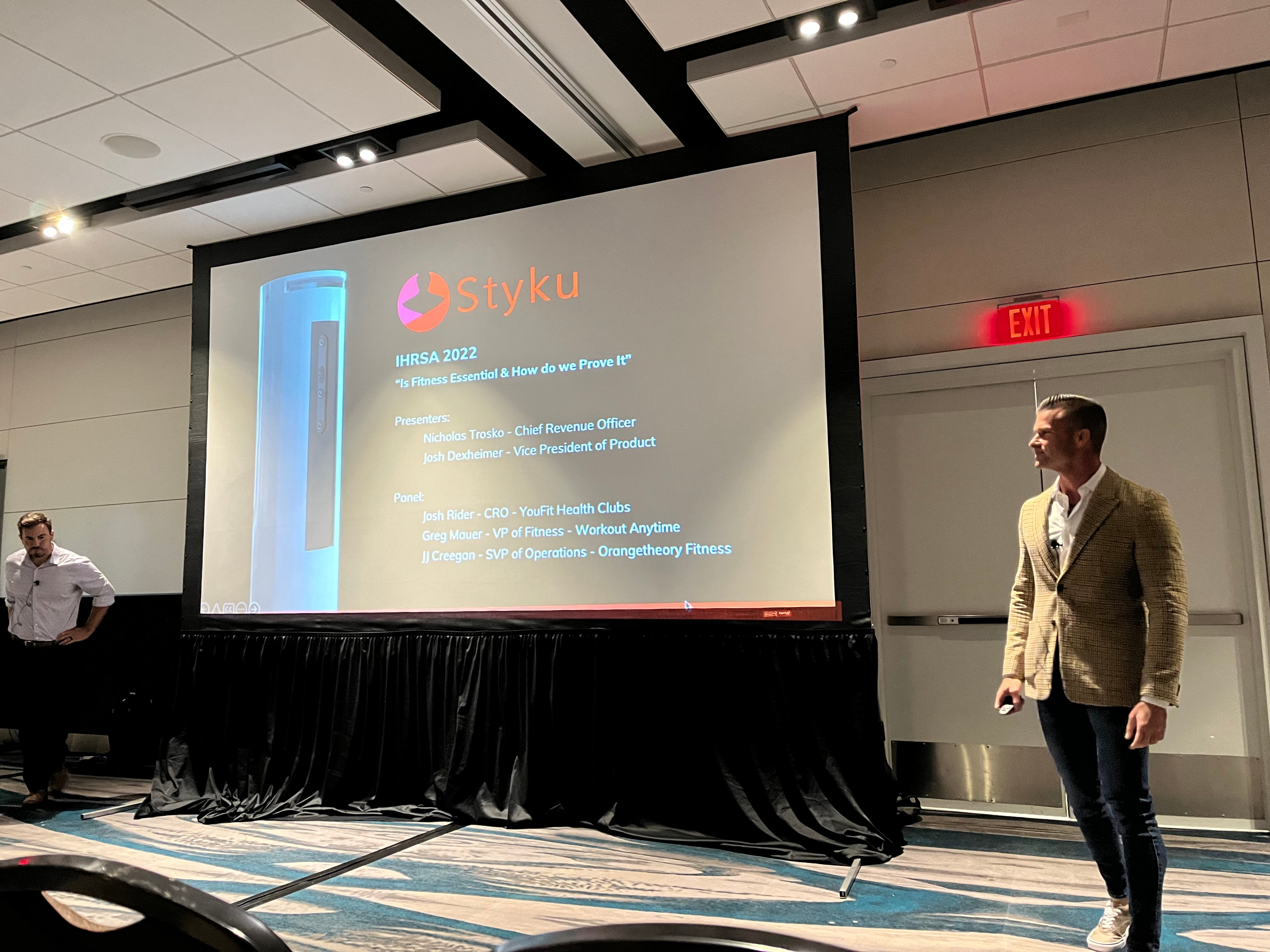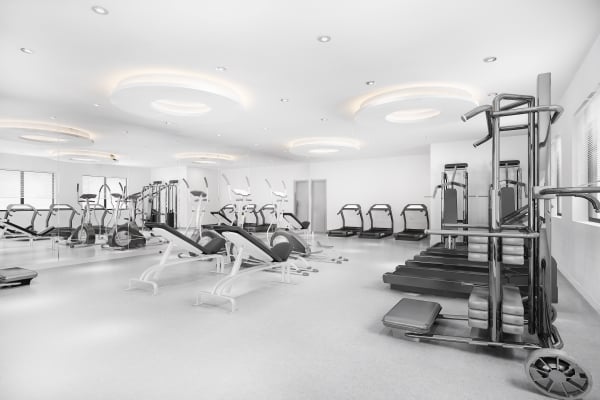The COVID-19 pandemic has shown us the vulnerabilities of human lives and modern healthcare infrastructure. Everyone was caught off guard. Hospitals were overloaded, governments panicked, and even the WHO (World Health Organization) had conflicting bulletins on how we could combat the virus turned pandemic. But if there is one thing that this pandemic has taught us, it is crucial to invest in one's health and maintenance.
Modern technology continues to innovate the way we live our lives. With the current boom in cloud infrastructure, data analytics, and 3D imaging, who would've thought these three would go hand-in-hand in combating the COVID-19 pandemic and improving people's overall health?

The Relationship Between COVID-19, Obesity, and Sedentary lifestyle
The ongoing pandemic has taken a lot of innocent lives, most of which are individuals with comorbidities. These comorbidities range from terminal illnesses such as cancer to cardiovascular issues brought about by obesity and respiratory issues, be it asthma or other breathing problems. But one silent killer in the COVID-19 pandemic is the sedentary lifestyle.
Individuals who do have a sedentary lifestyle may or may not have comorbidities. The sad part is that some fatalities didn't know they already had comorbidities unless they had a regular check-up or were rushed to the hospital for an unrelated reason.
Additionally, the pandemic forced many people into a sedentary lifestyle with the shift to the remote work setup, or for the lack thereof, work. Imposed lockdown in various locations worldwide has made it difficult for people to access fitness facilities or go outside to walk.
Long-term Impact of a Sedentary Lifestyle
From a macro perspective, a sedentary lifestyle wouldn't give off any adverse effects right away on one's health. However, having people stay at home and sit down for more than 5-8 hours a day and even every day can adversely affect one's health by minimizing the calories burnt. A caloric surplus means weight gain, and increased weight gain in this forced sedentary lifestyle means being at risk of diabetes and obesity.
In fact, according to recent studies, Americans are sitting far more than they did before the COVID-19 epidemic. Sitting too much, according to studies, is linked to weight gain, heart disease, type 2 diabetes, and early death.
The Risks of a Sedentary Lifestyle
A sedentary lifestyle or being consistently inactive will put you at risk of the severe effects of COVID-19. This has also been proven in a study wherein patients who contracted COVID-19 were tested; it showed that consistently inactive patients were at a higher risk of hospitalization, even being admitted to the ICU, compared to the active patients who are meeting their goals and physical activity needs.
The CDC also supports this claim that obesity increases the risk of hospitalization due to COVID-19, further noting that the lack of physical activity and overeating can lead to death. In addition, the chances are increased with COVID-19 putting your respiratory system in danger if contracted.
Although some comorbidities may be genetic, staying physically fit will earn you a good defense against the virus. When aerobic or cardio exercises are being performed religiously and in increasing intensity, you can build on your Vo2Max (the amount of oxygen your body utilizes while performing a physical activity at maximum intensity) and your HRR (Heart Rate Reserve,) This strengthens your heart and lungs in the process.

Cloud Infrastructure and Data Analytics
Cloud infrastructure and data analytics are two of the most essential tools available to businesses today. Cloud infrastructure provides the computational power and storage needed to run data-intensive applications. At the same time, data analytics helps organizations make sense of their data and make better decisions.
Together, these technologies can help businesses improve their operations and compete in the marketplace. Cloud infrastructure is particularly well suited for data-intensive applications such as big data and machine learning, which require vast amounts of computing power and storage.
How Data Analytics Improves Decision Making
On the other hand, data analytics helps organizations sift through their data to find patterns and insights that can be utilized to improve decision-making and forecasting. When used together, cloud infrastructure and data analytics can help businesses unlock the full potential of their data.
Indeed, the COVID-19 pandemic has put data analytics and cloud infrastructure to the test. Healthcare organizations have been overwhelmed with patients, tests, and medical staff data. At the same time, governments have been collecting data on the spread of the virus and the impact of lockdown measures.
Data analytics teams have been working around the clock to identify trends and patterns to make sense of this data. And the insights they have uncovered have been essential in helping healthcare professionals understand the pandemic and make decisions about treatment and policy.
The Impact of Cloud Infrastructure
In addition, cloud infrastructure has also played a critical role in the pandemic. With so much data being generated, traditional on-premise data centers would quickly become overwhelmed, which is why cloud providers have scaled up their capacity to meet the needs of data-intensive applications like data analytics. And because cloud services are typically more affordable than on-premise solutions, they have been a lifesaver for cash-strapped healthcare organizations.
Data analytics and cloud infrastructure have proved their worth during the COVID-19 pandemic. Together, they have enabled healthcare organizations to make sense of the data and make informed decisions that could help save lives.
Additionally, with almost everyone turning remote, from work setup and even lifestyle, cloud infrastructure and data analytics have worked together to put some normalcy in our lives by making "the new normal" easy and accessible for almost everyone. From the creation of virtual offices to the fast access to health-related applications, the implications of data analytics and cloud infrastructure goes beyond what we could have imagined.
.png?width=1920&name=BeforeAfter2(1).png)
3D Modeling and Styku
3D scanning uses 3D technologies to create a digital 3D model of an object or environment. 3D scanners are used to capture data about the shape and appearance of an object or environment. This data can then be used to create a 3D model that can be viewed on a computer or 3D printed.
3D scanning can be used for various applications, including body scanning, medical imaging, and architectural modeling. 3D body scanning uses 3D technologies to create a digital 3D model of a human body.
Styku is a Los Angeles-based company whose goal is to create technology that will be the driving force of the fitness economy. Over the years, there has been an economic boom in fitness, from gym memberships, apparel, equipment, supplements, and other services. The company understands that modern consumers are more aware of their health and are looking for ways to improve their lifestyles.
Our company uses 3D body scanning to help people track their bodies. We allow users to get a 3D body scan, which takes measurements of the body to create a three-dimensional model.
The Styku 3D scanner device captures data about the shape and appearance of the body and this is the data that is then used to create a 3D model. The scanner uses infrared light to take body measurements. Styku's technology can be used for various purposes, including helping people track their fitness progress, understanding how different clothes fit, and even helping people shop for clothing.
What Stkyu is Doing to Curve the Effects of COVID-19
Health has begun to be a top priority for all people. At Styku, they understand that when it comes to health, people need to know everything and anything, especially if it's about their health.
The 3D body scanning technology is poised to realign the fitness economy by putting people on the right track to achieving their fitness goals and putting fitness-related companies on the track of accountability for their products and services.
3D body scanning is set to make people more physically aware of their bodies and be able to see if the supplements and services that they are availing are actually working for them.
And ultimately, this new technology will highlight the key notion that everyone needs to understand when it comes to fitness: Not everyone's the same. What works for someone else might not work for you. And what Styku’s technology does is to understand and realize what is and what will work for each individual based on their own unique physical make-up.
As for companies, the Styku 3D technology and Styku LeaderBoard will enable them to track and monitor health metric data globally, company-wide, and at the individual level, which may help them earn a "necessary healthcare/public health service" classification. Moreover, the data derived from Styku’s scanning of their clients will help them improve their services by having a better monitoring system for their clientele.
Fitness Technology and Beyond
The COVID-19 pandemic has forced people to change how they live and think about their health. It has also forced fitness companies to change the way they operate. With the help of 3D scanning technology, Styku is helping people to understand their bodies better and is helping fitness companies to be more accountable for their products and services.
3D scanning technology is going to change the way we live, work, and play. We will be able to see things that we never thought possible. And with the help of cloud infrastructure, we will be able to better manage, monitor, and analyze data in order to make better health decisions.






